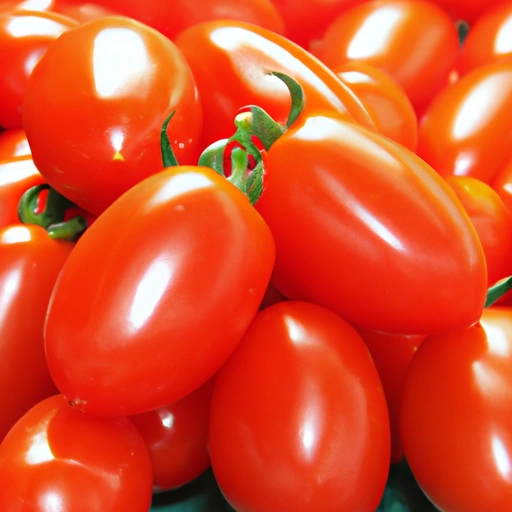Plum Tomato
Description

Plum tomatoes, also referred to as 'Roma' tomatoes, are a type of tomato known for their elongated shape, fewer seeds, firm flesh, and deep red color. They are a popular choice in cooking due to their low moisture content and concentrated flavor, which makes them ideal for sauces, pastes, and canned tomato products. Plum tomatoes can vary in size but typically measure about 3 inches in length and 2 inches in width (approximately 7.6 cm by 5.1 cm).
Common uses
Plum tomatoes are commonly used in both raw and cooked forms. They are a frequent addition to salads, bruschettas, salsas, and sandwiches. Cooked applications include pasta sauces, soups, stews, and as a base for pizza toppings. Their thick skin makes them suitable for roasting and grilling, enhancing their natural sweetness.
Nutritional value
Calories
A standard serving of plum tomatoes, about 148 grams or 5.3 ounces, contains approximately 30 calories.
Protein
This serving size offers around 1.5 grams of protein.
Fat
Plum tomatoes contain a negligible amount of fat, typically less than 0.5 grams.
Carbohydrates
They are comprised of about 7 grams of carbohydrates.
Vitamins
Rich in vitamin C and vitamin A, they also provide a good source of vitamins K and B-complex.
Minerals
They offer essential minerals such as potassium and manganese.
Health benefits
The nutritional profile of plum tomatoes contributes to numerous health benefits. The lycopene, an antioxidant found in tomatoes, promotes heart health and may reduce the risk of certain types of cancer. The fiber in plum tomatoes aids in digestion and helps maintain a healthy gut. Furthermore, the vitamins and minerals support immune function and bone health.
Potential risks
While generally safe for consumption, some individuals may have an allergy or intolerance to tomatoes. Consuming large quantities may lead to acid reflux or heartburn for those with sensitive stomachs. Care should be taken by individuals with kidney problems as tomatoes contain potassium, which needs to be managed in their diet.
Common recipes
Plum tomatoes can be found in various recipes including marinara sauce, tomato soup, ratatouille, and caprese salad.
Cooking methods
They can be roasted, grilled, sautéed, or stewed to bring out their full flavor. They are also commonly used in canning and preserving.
Pairing with other ingredients
These tomatoes pair well with fresh herbs like basil and oregano, garlic, olive oil, cheese, and a wide range of vegetables and meats.
Summary
Plum tomatoes are a versatile and flavorful ingredient that enriches a variety of dishes worldwide. Their historical roots in Mediterranean cuisine and their expansion across continents have made them a beloved vegetable in many cultures. With a rich nutritional value and ample culinary uses, plum tomatoes are a staple in both professional and home kitchens.